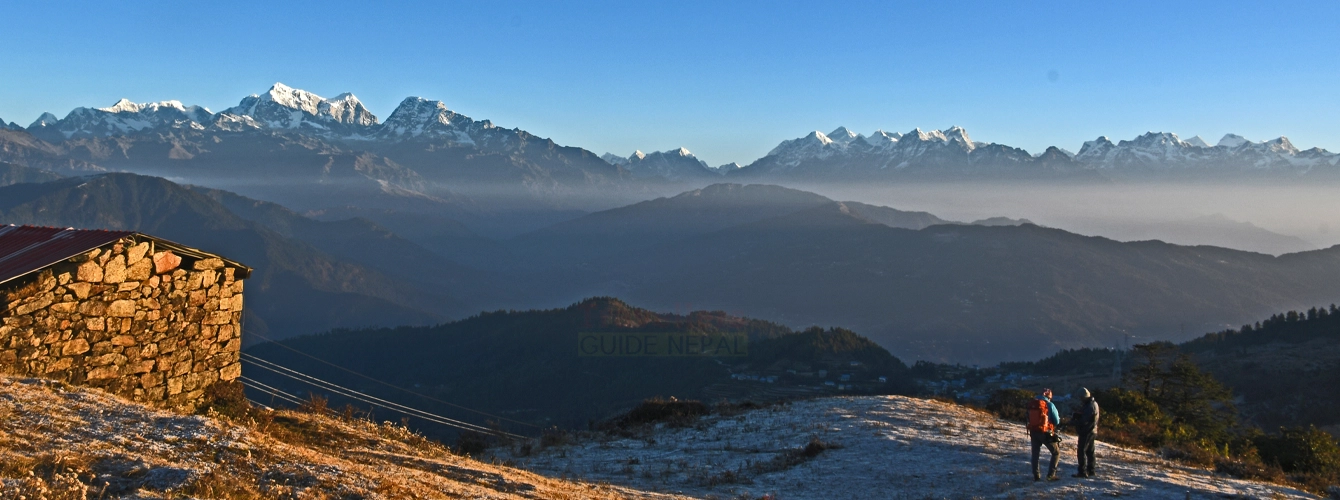
The Pikey Peak Trek is celebrated as one of the best vantage points to witness a stunning panorama of Himalayan peaks, including Mount Everest. Even Sir Edmund Hillary, the first to conquer Everest, praised this spot as his favorite place to admire the world’s tallest peak. Located in the Lower Solukhumbu Region, this newly introduced trekking route blends cultural immersion, breathtaking landscapes, and a unique off-the-beaten-path experience.
On the Pikey Peak Trekking journey, adventurers are treated to sweeping views of the entire Himalayan range, including iconic mountain ranges such as Annapurna, Manaslu, Ganesh Himal, Langtang, Jugal Himal, Gauri Shankar, Numbur, Everest, Makalu, and Kanchenjunga. The sunrise and sunset views from Pikey Peak Nepal are truly spectacular, offering some of the most memorable moments for any trekker.
The 6-day Pikey Peak Trek Itinerary is designed to minimize altitude sickness, with gradual ascents each day. The trek leads through dense Rhododendron, Oak, and Pine forests, passing through traditional villages nestled on ridges surrounded by terraced fields.
In addition to the jaw-dropping scenery, trekkers experience the warmth of Sherpa, Tamang, and Magar culture. As a lesser-known route, Pikey Peak Hiking offers tranquility and solitude, far from the crowds typically found on other popular Nepalese trekking trails.
What to Expect The Pikey Peak Trek is a moderate-level trek in the Lower Everest Region, ideal for those with a basic fitness level. The trail features a mix of steep ascents and descents but does not require technical climbing skills. On average, trekkers walk for 5-7 hours daily. Physical preparation, including jogging, running, or leg-strengthening exercises, can enhance your trekking experience. Before starting your adventure, it’s helpful to consult a Pikey Peak Trek Map and review a Pikey Peak blog and watch Pikey Peak Trekking Video for more insights.
The best time to start on the Pikey Peak Trek is during spring (March-May) and autumn (September-December). These seasons offer stable weather, clear skies, and excellent visibility of the surrounding peaks. In spring, trekkers are greeted by blooming Rhododendrons, while autumn coincides with Nepal’s festive season, adding a rich cultural element to the trek. Winter (December-February) brings colder temperatures but also great visibility, making it a unique option for those who can handle the chill. However, the monsoon season (June-August) brings heavy rainfall, making the trail slippery and challenging.
The Pikey Peak Trek is perfect for trekkers looking to delve themselves into the beauty of the Himalayas, experience authentic Sherpa, Tamang, and Magar culture, hospitality and avoid the crowds of more popular trekking routes. With its incredible viewpoints, moderate difficulty, and off-the-beaten-path charm, this trek guarantees an unforgettable adventure in Nepal.
We’re passionate about preserving the pristine beauty of Pikey Peak. Our eco-friendly trekking practices ensure we leave no trace behind, promoting sustainable tourism and supporting the local community. As locals with expert knowledge of the region, we’re committed to providing unforgettable trekking experiences. Experience unforgettable adventures with the Blossom Expeditions team and create lasting memories of the Pikey Trek.
Days Programs
Day-1 Drive to Dhap (2840m) 7-8 hours
Day-2 Trek to Jhapre (2820m) 5-6 hours
Day-3 Trek to Pikey Base Camp (Dairy) (3640m) 7-8 hours
Day-4 Trek to Junbesi (2700m) via Pikey Peak (4065m) 7-8 hours
Day-5 Day excursion to Thupten Chholing Monastery Drive to Phaplu (2470m) 6-7 hours
Day-6 Drive to Kathmandu 7-8 hours
Trekking Grade: Mild to Moderate
Maximum elevation: 4065m.
Starting point: Dhap
Ending point: Phaplu
Duration Trek: 6 days 5 nights
Minimum Group Size: 2
Trekking mode: Tea House
Season: Mid-September to May
Comments